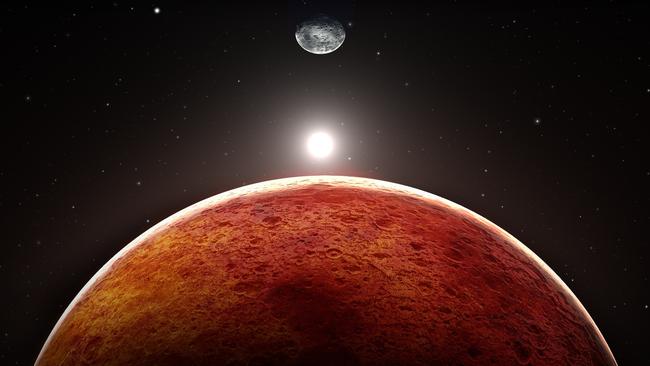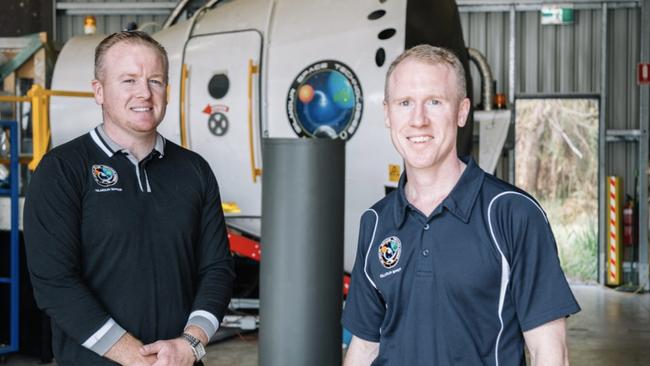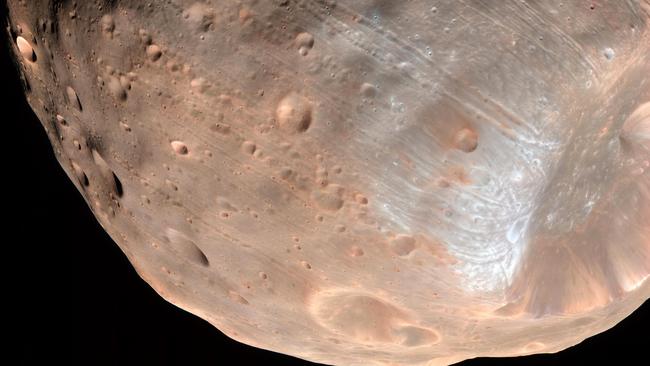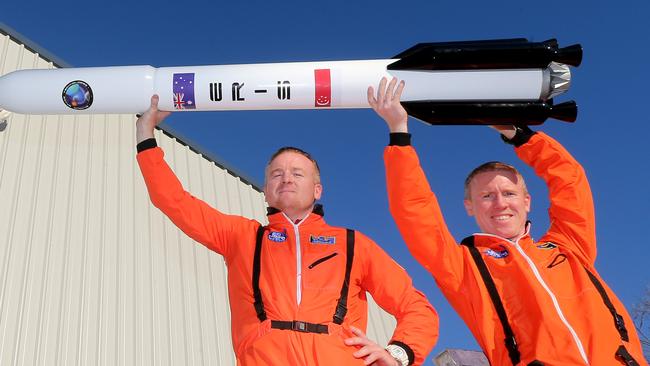Gold Coast business: Pimpama’s Gilmour Space Technologies plans Mars mission
A GOLD Coast-based space exploration company wants to send a solar-powered spacecraft to Mars in a mission that could set the stage for interstellar exploration and outer space mining.
News
Don't miss out on the headlines from News. Followed categories will be added to My News.
A GOLD Coast-based space exploration company wants to send a solar-powered spacecraft to Mars in a mission that could set the stage for interstellar exploration and outer space mining.
Gilmore Space Technologies is planning to propose at least one potential space mission to the Australian Space Agency (ASA) by December in a bid to help chart the nation’s course to the stars.
GOLD COAST SPACE CRAFT COULD LAND ON OTHER PLANETS

At a cost of $30 million and over a mission period of four to five years, the company has proposed doing at least one of the following missions:
* A flyby or orbit of a near-Earth object such as an asteroid.
* A solar sail-powered mission to the Moon.
* A solar sail mission to Phobos, Mars’s largest moon.
COAST PERFECTLY PLACED TO LEAD SPACE RACE

Company co-founder James Gilmour said these missions could inspire renewed interest in space and demonstrate key technologies that could lead to off-world mining and human bases on the Moon.
“This industry is part of the future and lets us know more about ourselves and our place in the galaxy,” he said.
“This is a call to open up a dialogue.
“Timing is everything with any successful human endeavour and we have to start somewhere – memorandums of understanding and letters of intent are not good enough.”
COAST COMPANY WANTS TO PUT A ROVER ON MARS

Mr Gilmour said he and his brother Adam, the company’s fellow co-founder, were inspired by US President John F. Kennedy’s 1962 speech in which he famously said: “We choose to go to the Moon in this decade and do the other things, not because they are easy, but because they are hard.”
The company’s pitch to the ASA is that the missions would develop technology and “unlock the space industry’s multi-trillion dollar potential’’.
The Moon and Mars missions would use experimental solar sail technology, which has been put forward as a solution to fuel-related limitations.

It would allow craft to travel to other celestial bodies with minimum need for chemical-based fuels currently used by spacecraft.
The Japanese Aerospace Exploration Agency (JAXA) in 2010 launched IKAROS, an experimental spacecraft that demonstrated solar sail technology, which uses radiation from the sun to accelerate the craft, in a flight past Venus.
The Federal Government has allocated $15 million over three years for collaborative research with other space-faring nations.

A conference of space industry scientists was told last month that Australia’s space industry would be worth $12 billion by 2030.
The pitch has been welcomed by Mayor Tom Tate, who said the space industry was a major plank of the diversification of the Gold Coast’s economy.
“These ambitious space projects typify what the Gold Coast is about – having no boundaries and daring to dream big,” he said.
“I’ve always pushed to broaden our economy but taking our economy into space engineering and space travel is certainly the next level.
“Generations to come may well look back in admiration for what the Gilmours have achieved in 2018 and beyond.’’
The company was founded in 2012 and has performed several tests and launches.
SUBSCRIBE TO THE BULLETIN AND GET A FITBIT

The Gilmours last month received a $19 million funding boost from the Federal Government, which the company will use to further develop its low-cost rockets and launch vehicles to send small to medium-sized satellites into low-earth orbit.
Adam Gilmour told the Gold Coast Bulletinlast month the company would conduct a suborbital test flight in November, with plans for its first orbital test to follow in 2020.
The projects will see Gilmour’s current staff of 28 almost double in the next 12 months.
NEVER MISS A MINUTE WITH THE GOLD COAST BULLETIN APP

In February, the Gilmours signed a deal with NASA to work on a rover to harvest water from the surface of Mars.
The company says its innovative hybrid propulsion technology is cleaner and more efficient than traditional rockets.
Mission 1: Fly-by/Orbit a near-Earth object
This mission would involve sending a craft into low earth orbit and then visiting a near-Earth object (NEO) such as an asteroid. This mission would demonstrate the capability to identify and approach NEOs, investigate them and potentially prospect for valuable resources in space.
Mission 2: Solar sail mission to high Earth orbit and the Moon
This would require a probe/spacecraft that could deploy a solar sail and travel from Earth pulling its payload and riding the solar wind of charged particles from the sun. Its commercial outcomes would demonstrate the use of solar sails as a zero propellant space tug for carrying payloads out of the gravity well of Earth. Its potential fuel savings could be as high as 80-90 per cent compared to current chemical technology used today.
Mission 3: Solar Sail Mission to Phobos
This mission would send a craft from Earth to Mars and visit the red planet’s largest moon, Phobos. Gilmour Space argues that solar sails have potential to move large payloads to the Moon or Mars, potentially saving hundreds of millions of dollars for each flight.

How the spacecraft works:
The craft would be launched in a conventional rocket from Earth into orbit, where it would be deployed. Once free of the rocket, the sail would be expanded and used to propel the craft through space using the radiation from the sunlight. The sails, in essence made of mirrors, would continue to absorb the solar energy and push the craft through space. Some fuel would be carried aboard to allow for course corrections. This technology was first tested in 2010 by the Japan Aerospace Exploration Agency’s experimental spacecraft IKAROS (Interplanetary Kite-craft Accelerated by Radiation Of the Sun).


